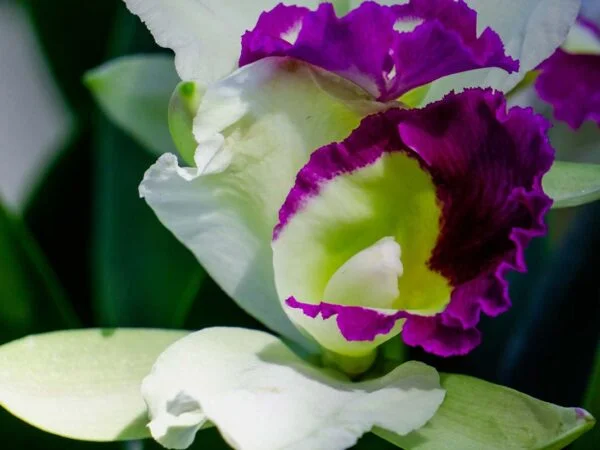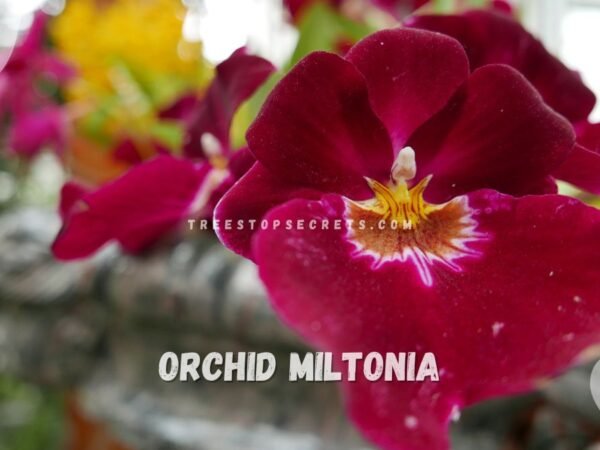Curious about how much light your phalaenopsis orchids need? Finding the perfect balance is crucial. Too little light, heat, and water, and they won't bloom; too much, and they'll wither. These delicate beauties thrive indoors in bright, indirect light, similar to sipping a refreshing drink in the shade on a sunny day—just enough to feel warm but not scorching. Understanding their sunlight needs can be like finding the sweet spot for your favorite potted plant – it's all about that Goldilocks level of brightness.
Ensuring your phalaenopsis orchids receive just the right amount of sunlight and water is essential for their growth and blooming cycle. But don't worry; we've got you covered! Let's delve into demystifying the light requirements for these stunning orchids so you can give them just what they need to flourish.
Key Takeaways
- Assess your Phalaenopsis orchids' light levels: Use a light meter or observe the intensity and duration of natural light to determine if it meets their needs.
- Optimize light exposure: Place orchids in bright, indirect light to ensure healthy growth and blooming.
- Watch for signs of inadequate light: Keep an eye out for pale leaves, lack of flowering, and elongated stems, as these indicate insufficient light exposure.
- Prevent light-related stress: Rotate orchids regularly and provide shade during intense midday sunlight to avoid light-induced damage.
- Consistent care is key: Maintain a regular watering and fertilization schedule, along with appropriate temperature and humidity levels, to support the overall health of your orchids.
- Address issues promptly: Monitor your orchids for common ailments and implement appropriate care strategies, whether in high light or low light, to maintain their well-being.
Light Requirements for Phalaenopsis Orchids
Basic Principles
Understanding how much light phalaenopsis orchids need is crucial for their growth and blooming. Light is essential for photosynthesis, the process through which plants produce energy to grow and bloom. Different orchid species have varying light needs, and it's important to cater to these specific requirements.
Ideal Light Conditions
For phalaenopsis orchids, providing bright but indirect light is ideal. Direct sunlight can damage their leaves, so it's best to place them in areas with filtered or diffused light. East or west-facing windows provide optimal exposure without the risk of scorching the delicate leaves.
Maintaining a balance between light and shade is crucial for phalaenopsis orchids. Using sheer curtains can help filter intense sunlight, preventing any potential harm to the plants. Regularly rotating the orchids ensures that all parts receive even amounts of light.
Seasonal Adaptations
In spring and fall, adjusting light exposure according to changing daylight hours is essential for the well-being of phalaenopsis orchids. As seasons transition, monitoring temperature changes becomes equally important as they directly affect light levels required by the plants.
During summer, protecting phalaenopsis from harsh midday sun becomes necessary. Increasing humidity levels helps counteract any adverse effects of intense sunlight on these delicate flowers. Adequate air circulation also plays a role in preventing heat stress during this season.
In winter months when natural light may be insufficient, supplementing with artificial grow lights becomes necessary for maintaining adequate conditions for phalaenopsis orchids' growth and blooming capabilities. Protecting them from cold drafts near windows during winter further ensures their well-being amidst reduced daylight hours.
Assessing Light Levels in Your Home
Natural Light Sources
Natural light from windows is crucial. Placing your orchids near east or west-facing windows can provide them with the balanced exposure they require for healthy growth. Consider utilizing outdoor shaded areas to give your orchids extra natural light exposure without subjecting them to direct sunlight, which can be harmful.
Furthermore, ensuring consistent indirect natural light is essential for the well-being of your phalaenopsis orchids. This means that you should avoid placing them in areas where the intensity of natural light fluctuates significantly throughout the day. By doing so, you are providing a stable and nurturing environment for your delicate plants.
Windows and Placement
To meet the light requirements of phalaenopsis orchids, it's important to place them strategically in relation to windows within your home. East or west-facing windows offer a good balance of light intensity, making these locations ideal for positioning your precious plants. However, it's crucial to avoid placing them near south-facing windows as this could expose them to excessive sunlight and potentially cause sunburn.
In addition to choosing suitable window orientations, using sheer curtains or blinds can help regulate the amount of light reaching your orchids. These accessories allow you to control and adjust the intensity of incoming sunlight according to the specific needs of your plants.
Light Dispersion Techniques
Maximizing available light levels is essential when caring for phalaenopsis orchids at home. Utilizing reflective surfaces such as mirrors or white walls can enhance their exposure by dispersing and redirecting incoming natural light effectively throughout their environment. Positioning shelves or stands strategically can also optimize how much available light reaches each plant individually.
Signs of Inadequate Light Exposure
Recognizing Symptoms
Monitoring leaf color changes is crucial in determining whether they are receiving adequate light. If the leaves appear darker than usual, especially a deep green or reddish hue, this could indicate that the plant is not getting enough light. If you notice stunted growth in your orchid, this may be a sign of insufficient light exposure. The stems of the orchid can also provide valuable clues about their lighting conditions; elongated stems are often indicative of low-light environments.
It's important to remember that phalaenopsis orchids require just the right amount of light for healthy growth and blooming. Too much or too little light can negatively impact their overall well-being.
Orchid Root Health
The health of an orchid's roots plays a pivotal role in its ability to absorb nutrients when exposed to proper lighting conditions. When assessing root health, look for firmness and observe their color; healthy roots should be firm and have a greenish appearance. Adjusting the watering frequency based on both root health and light exposure is essential for maintaining optimal growing conditions for your phalaenopsis orchids.
By ensuring that your orchid's roots remain healthy through appropriate watering practices, you contribute significantly to their ability to thrive under suitable lighting conditions.
Sunburned Leaves Management
If your phalaenopsis orchid has suffered from sunburned leaves due to excessive sunlight exposure, carefully trimming these damaged leaves will encourage new growth while preventing further stress on the plant. Relocating the affected plants away from direct sunlight after leaf damage occurs is crucial for promoting recovery. Shielding any injured areas from further sun exposure during this period will aid in restoring your orchid's overall health.
Managing sunburned leaves effectively ensures that your phalaenopsis orchids can recover from excessive sunlight exposure without enduring prolonged damage.
Optimizing Light for Healthy Growth
Rotating for Sun Exposure
To ensure that Phalaenopsis orchids receive adequate light from all angles, it's essential to rotate them regularly. By rotating the plants, you can guarantee that each side receives an equal amount of sunlight. This practice prevents the orchids from leaning or growing unevenly towards the light source. For instance, if your orchid is placed on a windowsill, rotate it every few days so that each side faces the window at some point.
Maintaining uniform sun exposure promotes balanced development in Phalaenopsis orchids and helps prevent issues such as stunted growth due to inadequate light on certain sides. By adjusting the orientation of your orchid plant, you can encourage healthy and symmetrical growth while avoiding potential damage caused by uneven exposure to sunlight.
Temperature and Humidity Factors
In addition to sufficient light exposure, it's crucial to maintain consistent temperatures within the ideal range for Phalaenopsis orchids' lighting needs. These plants thrive in environments with temperatures ranging from 65°F to 80°F during the day and slightly cooler temperatures at night. Moreover, maintaining optimal humidity levels, typically between 50% and 70%, contributes significantly to their overall well-being.
Consistent temperature and humidity levels play a vital role in supporting Phalaenopsis orchids' ability to make use of available nutrients effectively. When these environmental factors are kept within their preferred ranges, nutrient uptake is optimized, leading to healthier foliage and vibrant blooms.
Watering and Light Balance
Balancing watering schedules with light exposure is critical for ensuring optimal health in Phalaenopsis orchids. Overwatering can lead to root rot when combined with excessive direct sunlight exposure; therefore, finding a harmonious balance between these two factors is key. When watering your Phalaenopsis orchid plant:
-
Ensure proper drainage by using pots with drainage holes.
-
Allow excess water to drain out completely after watering sessions.
-
Adjust watering frequency based on environmental conditions like temperature and humidity levels.
Preventing Light-Related Stress in Orchids
Avoiding Overexposure
Phalaenopsis orchids require indirect light, as direct sunlight can lead to leaf burn. Placing them near a window with a sheer curtain or on a north-facing windowsill is ideal. If the leaves turn yellow, it may be an indication of excessive light exposure.
Exposing Phalaenopsis orchids to direct sunlight for extended periods can result in leaf damage, making it crucial to ensure they receive just the right amount of indirect light. Too much sun exposure can cause harm and hinder their growth.
Preventing Bud Blast
Bud blast occurs when Phalaenopsis orchids are subjected to sudden changes in their environment, such as variations in temperature and lighting conditions. To prevent bud blast due to inadequate light, position your orchid where it receives sufficient but not excessive indirect sunlight.
When Phalaenopsis orchids do not receive enough light, they may experience bud blast—where buds prematurely fall off before blooming. This phenomenon indicates that the plant requires more consistent and suitable lighting conditions for healthy flower development.
Dehydration Indicators
Monitoring dehydration indicators is crucial for maintaining the health of your Phalaenopsis orchid. When exposed to too much light without adequate hydration, these plants exhibit signs such as wilting leaves and dry potting medium.
Dehydration indicators include wilted leaves and parched potting medium caused by excessive exposure to bright light without corresponding hydration levels. It's vital to ensure that your Phalaenopsis orchid receives appropriate water intake alongside optimal lighting conditions.
Orchid Care Throughout the Lifecycle
Growth Characteristics
Phalaenopsis orchids require moderate light to thrive. They typically need around 12-14 hours of light per day, but direct sunlight can be too intense for them. It's essential to find the right balance between providing enough light and preventing light-related stress.
Orchids that receive too little light may not produce flowers, while those exposed to excessive sunlight can develop sunburn on their leaves. To ensure adequate lighting, consider placing your Phalaenopsis orchid near an east-facing window where it can receive gentle morning sun or use a sheer curtain to filter direct sunlight.
Maintenance Tips
When caring for Phalaenopsis orchids, it's crucial to monitor their exposure to natural light regularly. Check if they are receiving sufficient light levels by observing the color of their leaves - healthy leaves should be a vibrant green. If the leaves appear dark green or reddish, they might not be getting enough light; however, yellowing or bleached spots could indicate overexposure.
To provide consistent lighting without risking damage from direct sunlight, consider using artificial grow lights designed specifically for orchids. These lights emit a balanced spectrum ideal for supporting flower spikes and overall plant growth.
Feeding Techniques
In addition to proper lighting, feeding your Phalaenopsis orchid is vital for its health and blooming potential. When considering fertilization schedules, remember that increased exposure to bright indirect light necessitates more frequent feeding due to enhanced photosynthesis rates.
Fertilize your orchid every two weeks during active growth periods with a balanced fertilizer diluted at half-strength. During low-light conditions in winter months when growth slows down, reduce feeding frequency by half as well.
Potting Guidelines
Proper potting is also critical in ensuring optimal light absorption for Phalaenopsis orchids. Choose pots with ample drainage holes and utilize a well-draining medium like bark mix or sphagnum moss which allows air circulation around the roots while retaining moisture effectively.
Regularly repotting every one to two years will prevent compaction of the growing medium and maintain good drainage capacity necessary for healthy root systems.
Addressing Common Orchid Ailments
Pest Control Measures
It's crucial to understand that proper lighting can help prevent pest infestations. Phalaenopsis orchids thrive in bright, indirect light, but excessive exposure may attract pests like spider mites and aphids. To control these pests, you can use insecticidal soap or neem oil spray. These natural remedies effectively eliminate pests without harming the delicate orchid foliage.
Maintaining a clean growing environment by regularly removing dead leaves and debris helps prevent pest infestations. It's also essential to inspect new plants thoroughly before introducing them to your existing collection, as they might carry hidden pests that could spread to other orchids.
Treating Sunburned Foliage
Understanding how much light do phalaenopsis orchids need is vital for preventing sunburn on their foliage. When exposed to too much direct sunlight, the leaves of phalaenopsis orchids may develop brown or white patches due to sunburn. If this occurs, relocating the plant to a shadier spot immediately is crucial in preventing further damage.
To treat sunburned foliage, trim off any severely damaged leaves using sterile scissors or pruning shears. This encourages new growth and prevents the spread of any potential infections caused by the damaged tissue. After trimming, relocate the plant to an area with appropriate lighting conditions based on its specific needs.
Root Health Interpretation
Properly understanding how much light do phalaenopsis orchids need is essential for interpreting root health accurately. Inadequate lighting can lead to issues such as root rot due to excess moisture retention within the potting medium when roots are unable to photosynthesize efficiently.
Healthy roots are typically firm and green or silvery-white in color while unhealthy roots appear mushy and dark brown or blackish in color indicating rotting due possibly from overwatering combined with insufficient light exposure causing poor air circulation around the roots leading uproot suffocation which results into decay.
Advanced Orchid Care Strategies
Phalaenopsis orchids require the right amount of light to thrive and bloom. Adequate lighting is crucial for their overall health, and it's essential to balance natural and artificial light sources. Regular monitoring and adjustments based on seasonal changes are key in providing the ideal lighting conditions for these delicate plants.
Achieving the perfect lighting conditions involves understanding the specific needs of Phalaenopsis orchids. These orchids typically thrive in bright, indirect light, similar to what they would receive under a canopy of trees in their natural habitat. Direct sunlight can scorch their leaves, while insufficient light can hinder blooming.
To ensure your Phalaenopsis orchid receives just the right amount of light, consider placing it near an east or west-facing window where it can benefit from gentle morning or late afternoon sun without being exposed to intense midday rays. If natural light is limited, supplement with artificial grow lights designed for orchids to provide additional illumination during darker months or in spaces with inadequate sunlight exposure.
Summary
You've now got the lowdown on how much light your phalaenopsis orchids need. By understanding their light requirements, assessing your home's light levels, and optimizing their exposure, you can ensure your orchids thrive. Remember to keep an eye out for signs of inadequate light and take preventive measures to avoid stress on your plants. As you continue caring for your orchids throughout their lifecycle, use these strategies to address common ailments and consider advanced care techniques for optimal growth.
Now it's time to put this knowledge into action. Take a good look at your orchid's environment and make any necessary adjustments to provide the perfect amount of light. With these insights, you're well-equipped to nurture healthy, flourishing phalaenopsis orchids!
Frequently Asked Questions
How can I determine the light requirements for my Phalaenopsis orchids?
To assess the light needs of your Phalaenopsis orchids, observe their leaf color. Bright green leaves indicate sufficient light, while dark green leaves suggest inadequate light. Monitor any signs of sunburn or bleaching on the leaves, which may indicate excessive light exposure.
What are the signs of inadequate light exposure for Phalaenopsis orchids?
If your Phalaenopsis orchids are not receiving enough light, you may notice elongated stems and fewer flowers. The leaves might also appear darker than usual. Inadequate lighting can hinder their growth and overall health.
How can I optimize the light conditions for healthy growth of my Phalaenopsis orchids?
To optimize the lighting conditions for your Phalaenopsis orchids, consider placing them in an east or west-facing window to provide bright but indirect sunlight. You can also use sheer curtains to filter intense sunlight and prevent potential damage to the plants.
What are some strategies to prevent light-related stress in my Phalaenopsis orchids?
To prevent stress related to lighting, it's essential to acclimate your orchids gradually if you're moving them from low-light conditions to brighter environments. Rotating the plants periodically will ensure that all sides receive adequate exposure without causing undue stress on any particular area.
At what stages of an orchid's lifecycle is proper care crucial in terms of lighting?
Proper lighting is crucial throughout all stages of an orchid's lifecycle. From germination and seedling growth to blooming and dormancy periods, maintaining appropriate levels of sunlight ensures optimal development and overall well-being for your Phalaenopsis orchids.
Image Source: Paid image from CANVA




